A grant from the Planetary Society enabled the recent discovery of kilometer-sized asteroid 2020 QU6.
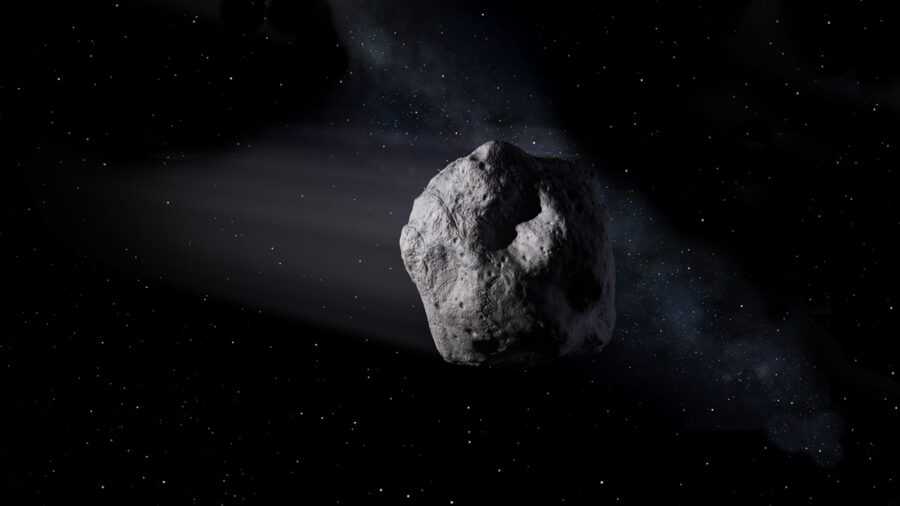
NASA
We have not yet found all the large, potentially hazardous near-Earth objects, as highlighted by the recent discovery of a kilometer-size asteroid.
Amateur astronomer Leonardo Amaral was scanning the skies on the night of August 27th, imaging a region in the constellation Indus, when he picked up a cosmic interloper: the asteroid 2020 QU6.
Amaral used the 0.3-meter reflector at the Campo dos Amarais observatory near Sau Paulo, Brazil. The observatory had received a recent upgrade thanks to a Planetary Society grant.
Turns out, 2020 QU6 is about a kilometer across — a surprising find given that most such large objects have been found and cataloged. The asteroid orbits the Sun once every 3.44 years on an orbit inclined 23.5° relative to the ecliptic plane. It poses no current threat to Earth, having passed within 40 million kilometers (24 million miles, more than 100 times the Earth-Moon distance) on September 10th.
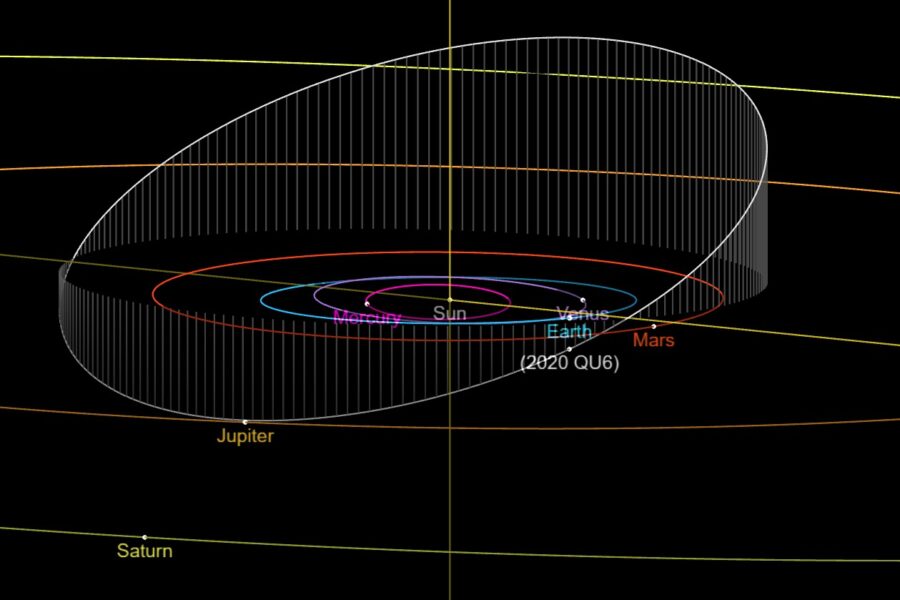
NASA/JPL
Planetary Society Grant
The discovery was made possible thanks to an $8,443 grant from the Planetary Society's Shoemaker NEO Grant program, which encourages advanced amateurs to hunt for new asteroids, as well as to track known asteroids and refine their future paths.
The grant enabled Amaral and the Campo dos Amarais observatory to upgrade to a more stable telescope mount, allowing for more precise tracking over longer periods of time. Amaral’s Southern Hemisphere vantage point also gave him an edge, as the southern sky is only sparsely covered by automated surveys.
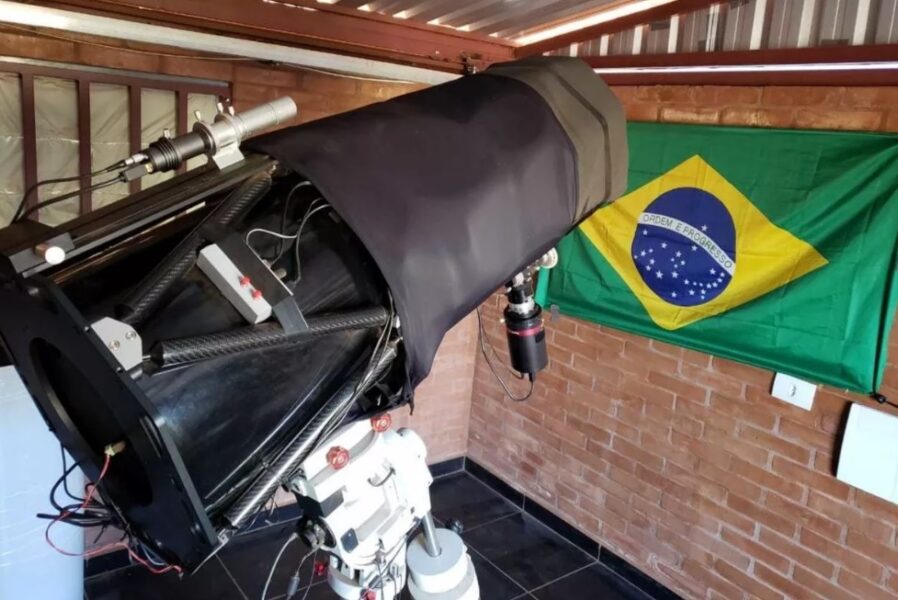
Leonardo Scanferla Amaral
Near-Earth Objects in the News
Near-Earth asteroids have been in the news a lot recently: On August 15th, asteroid 2020 QG passed just 2,950 km from Earth's surface, the closest a passing asteroid has come. Another asteroid, 2011 ES4 passed 1.48 million km from Earth on September 2nd and was recovered by the PanSTARRS survey, allowing astronomer Gianluca Masi to track the asteroid on September 6th.
“We hear more and more frequently about asteroid discoveries primarily because we are getting better at finding and tracking near-Earth asteroids,” says Bruce Betts (Planetary Society) in a recent press release. “There aren’t suddenly more asteroids, we’re just getting better at seeing them.”
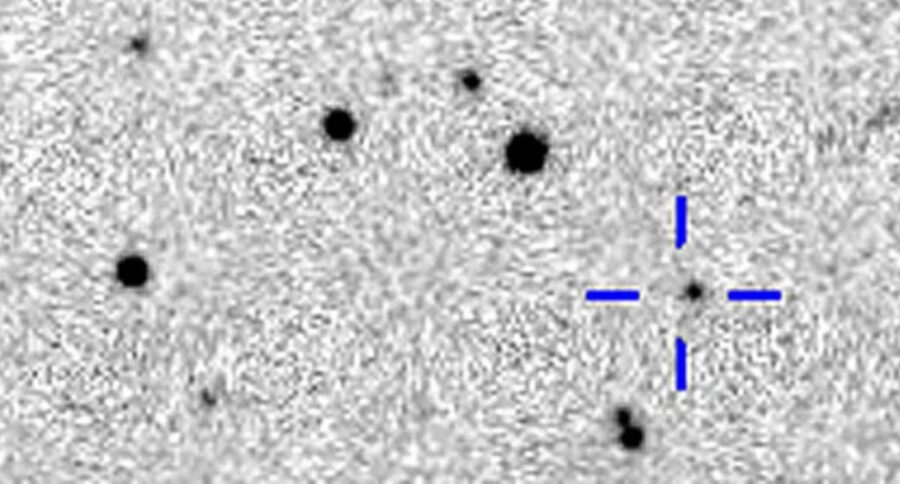
Leonardo Amaral
NASA's Mandate
Detecting hazardous space rocks in the inner solar system is of paramount importance, should we ever have to move one out of the way. In 1998, U.S. Congress asked NASA to identify 90% of near-Earth asteroids that are 1 kilometer in size and larger. NASA has met that goal, though Amaral's observations shows that there are still discoveries to be made.
Collision with a kilometer-size asteroid would have disastrous effects for the globe, but even smaller ones can cause regional damage. For that reason, Congress expanded the criterion in 2005, asking that NASA find near-Earth objects 140 meters and larger by 2020. We’re well behind that goal, with only an estimated 40% of the population discovered to date.
One NASA effort, the Near Earth Object Surveillance Mission (NEOSM, formerly NEOCam) could meet that goal in a decade. If funded, NEOSM would launch in the 2025 time-frame. NASA currently spends $160 million a year on planetary defense, less than 1% of its total annual budget.
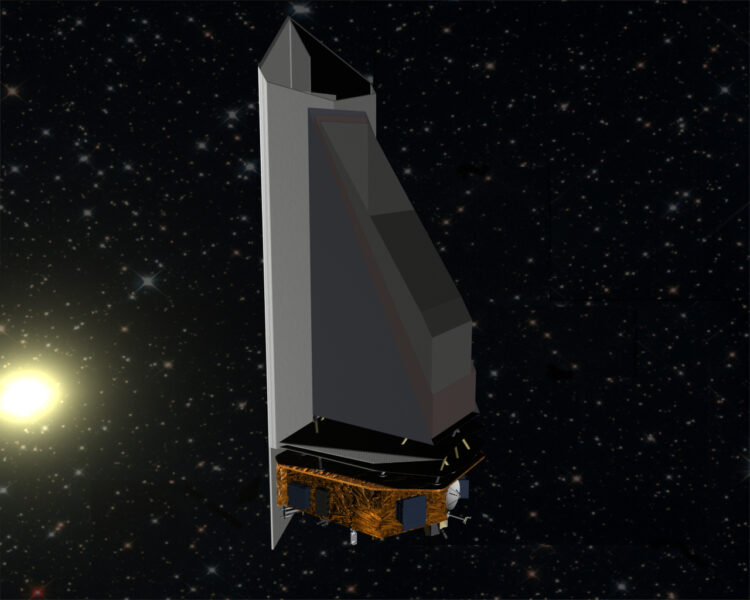
NASA / JPL
“This discovery reminds us that even though we’ve found most large NEOs, we haven’t found all of them,” says Casey Dreier (Planetary Society) in a recent press release. “We must continue to support ground-based astronomers and invest in new space-based capabilities like NEOSM in order to protect Earth now and in the future.”
The discovery shows that large, undiscovered space rocks are still out there — and that amateur observers can still make meaningful contributions to find them.
 5
5









Comments
Mike G
September 12, 2020 at 10:46 am
What additional observations of 2018 VP1? Latest listed by MPC is 2018-11-16.
You must be logged in to post a comment.
Rich
September 16, 2020 at 10:50 am
Mike G,
MPC has an Ephemeris Service:
https://minorplanetcenter.net/iau/MPEph/MPEph.html
The predicted magnitude for today is fainter than 30.0 and will remain so until October 29. Based on latest observations being 2018-11-16, there are huge uncertainties in position and date of closest approach. Because of the uncertainties, I expect that it will have to be recovered by an automated survey.
You must be logged in to post a comment.
Rich
September 16, 2020 at 10:35 am
In the section of this article titled "Near-Earth Objects in the News", you have a sentence on 2011 ES4:
"Another asteroid, 2011 ES4 passed 1.48 million km from Earth on September 2nd and was recovered by astronomer Gianluca Masi on September 6th." which contains a link to astronomer Gianluca Masi's report.
In the article, Gianluca Masi reports that 2011 ES4 was recovered by Pan-STARRS and that Pietro Sicoli, Italy recognized 2011 ES4 on the image. Gianluca Masi also mentioned that 2011 ES4 could only have been recovered by a survey like Pan-STARRS because of the huge uncertainty in its position (based on only 4 days of observation). With the new observation, Gianluca Masi was able to track 2011 ES4 precisely and obtain the image shown in his report.
You must be logged in to post a comment.
Yaron Sheffer
September 19, 2020 at 7:01 pm
Just a typo correction: The title's third word "front" should probably be "from".
You must be logged in to post a comment.
Gg
August 14, 2023 at 11:43 pm
So what size scope is required to contribute to the asteroid search? Here the Campo dos Amarais is a 12inch, but the asteriod is large. What would find a 140m rock?
You must be logged in to post a comment.
You must be logged in to post a comment.